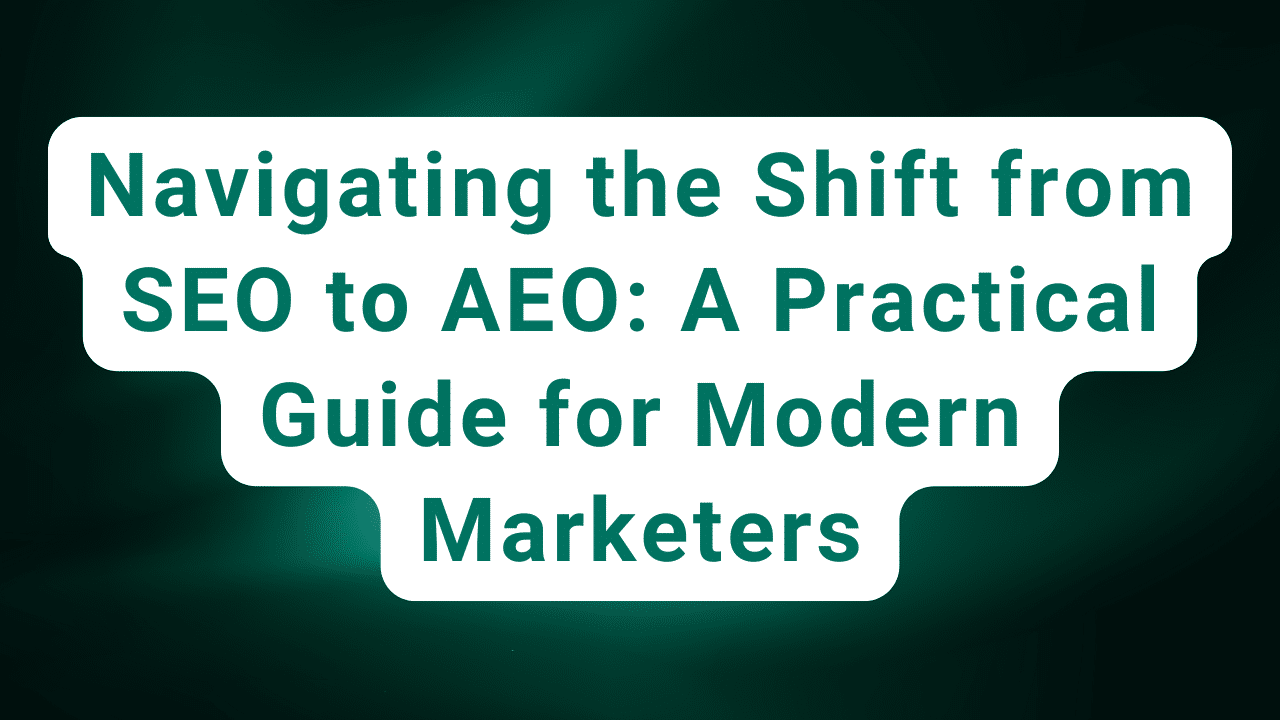Let me take you back a few years. I was in a strategy meeting, and someone pulled up a dashboard showing our organic traffic climbing. We all nodded like proud parents. “SEO’s working,” someone said, and we moved on. That was the game. Rank high, get clicks, celebrate.
But now? That same dashboard feels... incomplete.
Why AEO Matters in 2025
Because the way people search has changed. They’re not typing keywords anymore. They’re asking full questions. And they’re not scrolling through ten blue links, they’re getting one answer, often from an AI tool like ChatGPT, Gemini, or Copilot.
So here’s the kicker: if your content isn’t clear, structured, and trustworthy, it’s not just buried, it’s invisible.
This is where Answer Engine Optimization, or AEO, comes in. It’s not just a buzzword. It’s a shift in how we think about discoverability. SEO was about being seen. AEO is about being chosen.
Let’s break it down. Back in the day, someone would Google “best CRM for manufacturing.” You’d hope your landing page ranked high enough to get a click. Now, someone asks an AI, “What’s the best CRM for aligning marketing and sales in manufacturing?” And the AI gives them one answer. If your content doesn’t help answer that question directly, you’re out of the running.
It’s like going from being on the guest list to being the keynote speaker. You don’t just want to be included, you want to be the one they quote.
If you’re in marketing, demand gen, or RevOps, this matters. A lot. AI tools are looking for content that’s not just optimized, but credible. That means your blog posts, case studies, and even your CRM data need to work together to tell a consistent, trustworthy story.
I’ll be honest, when I first heard about AEO, I thought, “Great, another acronym.” But then I saw how AI tools were pulling answers from sources I’d never heard of, while our carefully crafted content sat untouched. That’s when it clicked. We weren’t speaking the AI’s language.
How to Optimize for Answer Engines
So how do you fix that? Start with clarity. Think of your content like a helpful coworker. If someone asked them a question, would they give a clear, confident answer, or ramble for five minutes before getting to the point? Organize your content around real questions your audience asks. Use FAQs and schema markup to help AI understand your pages. Lead with the answer, not a long intro. Treat your content like you’re training an intern, make it easy to learn from.
And please, keep it real. AI loves content that feels human. Share real stories and outcomes. Publish case studies with actual results. Write like you talk. Seriously. You’re not trying to beat the algorithm. You’re trying to be helpful.
Here’s a quick story. A prospect asked, “What’s the best CRM for aligning marketing and sales?” Our site had a generic landing page with buzzwords. No dice. But when we published a guide comparing HubSpot and Salesforce, shared real results, and used schema markup, we started showing up in AI-generated answers. We weren’t just visible. We were selected.
Getting Started With AEO
If you’re wondering where to start, here’s a simple roadmap. First, audit your content. Ask, “Does this page answer a real question clearly?” If not, rework it to lead with the answer. Then add schema and FAQs. Use structured data to help AI understand your content. Connect your stack. Make sure HubSpot, Salesforce, and analytics tools are sharing data. Update your KPIs. Start tracking AI visibility and citations, not just rankings. And train your teams. Help your content and RevOps folks think in terms of questions and answers, not just keywords.
Here’s the bottom line. Search is changing. Fast. It’s not about being first anymore, it’s about being trusted. As AI tools become the go-to for answers, the brands that focus on clarity, credibility, and usefulness will be the ones that get discovered and cited.
Tomorrow’s buyers aren’t just searching. They’re asking. And the only question that matters is: will your brand be the one with the answer?




















